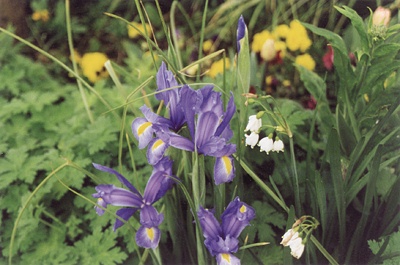All Nonfiction
- Bullying
- Books
- Academic
- Author Interviews
- Celebrity interviews
- College Articles
- College Essays
- Educator of the Year
- Heroes
- Interviews
- Memoir
- Personal Experience
- Sports
- Travel & Culture
All Opinions
- Bullying
- Current Events / Politics
- Discrimination
- Drugs / Alcohol / Smoking
- Entertainment / Celebrities
- Environment
- Love / Relationships
- Movies / Music / TV
- Pop Culture / Trends
- School / College
- Social Issues / Civics
- Spirituality / Religion
- Sports / Hobbies
All Hot Topics
- Bullying
- Community Service
- Environment
- Health
- Letters to the Editor
- Pride & Prejudice
- What Matters
- Back
Summer Guide
- Program Links
- Program Reviews
- Back
College Guide
- College Links
- College Reviews
- College Essays
- College Articles
- Back
The Path to a Green Future
Imagine an island in the middle of the ocean, built entirely from recycled ash from trash. This is Singapore’s ingenious solution for a landfill due to Singapore’s limited amount of land. Sustainable development is the development that meets the needs of the present without compromising the ability of future generations to meet their own needs (Sustainable Development). The world is an interconnected system that affects each country and community.
Edward O. Wilson successfully conveyed the challenges of sustainability by saying that “The great challenge of the twenty-first century is to raise people everywhere to a decent standard of living while preserving as much of the rest of life as possible” (Miller). As countries are developing and expanding it often comes at the expense of the environment and natural resources. It has come to the point where there is no more room for expansion that uses all of the natural resources leaving nothing for future generations.
Rachel Carson developed the concept of the environmental movement and highlighted relationship between the environment, society, and the economy in her 1962 novel Silent Spring. Over the years, the environmental movement has morphed into that has been embraced by countries around the world. Sustainable development is a particularly new concept in Singapore and Malaysia. For the past years, Singapore and Malaysia have been trying to adopt and integrate sustainable practices into their society and economy as they try to foster economic and social growth.
Singapore in particular has been making great strides in integrating sustainable practices into the environment. The Green Corridor is an old railroad that runs 429.2 acres through Singapore. It serves to preserve Singapore’s natural heritage by acting as a connector for flora and fauna.
Malaysia has taken note of Singapore’s reliable and fast transportation system, and has begun to institute these changes. The development of a reliable mass transit system is crucial to economic development. Charging people money to drive has worked efficiently in Singapore. Cohen said "we need to make driving cars more expensive and mass transit less expensive, more convenient and more comfortable." The Electronic Road Pricing (ERP) is an electronic toll collection system to manage traffic by way of road pricing. The transportation authority has reported that road traffic decreased by nearly 25,000 vehicles during peak hours. This decrease has helped to lower the amount of carbon dioxide in the atmosphere.
The road to developing a sustainable future includes making cities more livable, growth management and collaboration. Growth management tries to control the growth of a society by reducing the production and amount of cars on the road. When creating a sustainable city and incorporating nature, governments need to draw a boundary between the city and nature. When people are collaborating with one another, "you get different kinds of solution" (Stephen). These ideas are important because "we've got to make something better than what we've got. I think that, in fact, that "all of the past is but the beginning of a beginning. All that the human mind has accomplished is but the dream before the awakening" (Stephen). Creating a sustainable city isn't just about making it green and livable, it’s about creating an environment that is conducive to daily life. Being sustainable not only helps individual countries, but the world as a whole because it conserves valuable but also increasingly scare resources that are depleting.
Although sustainable development strives to achieve a harmonious balance between the environment, society, and economics, it ultimately has a long road ahead before all countries adopt sustainable practices. If we continue to ignore and overlook the impact our development has on our environment the future will be unknown.
A community should have the necessary resources at its disposable to make informed decisions about sustainability in order to protect future generations. Just as Catherine Pulsifer said, “No action, no change. Limited action, limited change. Lots of action, change occurs.” (Take Action) If we don’t take a stand for sustainability there is no telling what the future will hold.

Similar Articles
JOIN THE DISCUSSION
This article has 0 comments.
